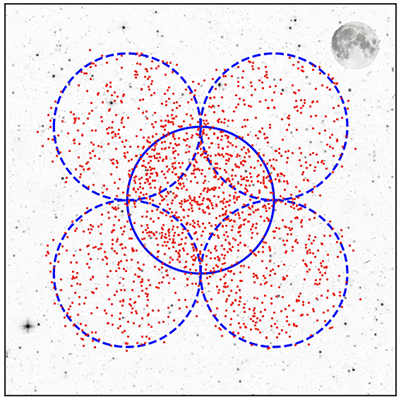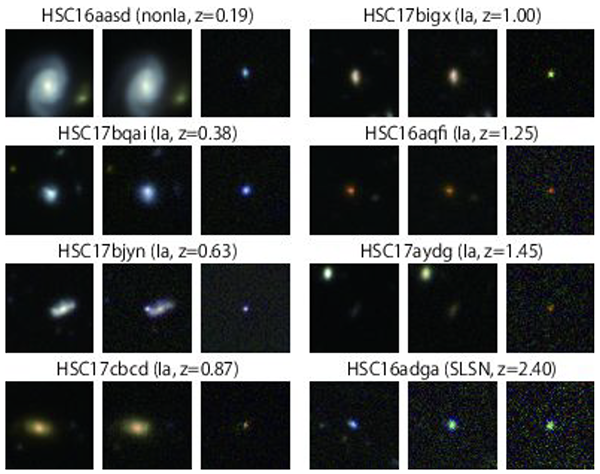NEWS
Subaru Telescope captures 1800 exploding stars
A team of researchers from Japan have identified 1800 new supernovae, including 58 Type la supernovae, 8 billion light years away. Their study, released online on May 30, combined the world's most powerful digital cameras along with a telescope capable of capturing wider night sky shots than conventional ones.
A supernova is the name given to an exploding star that has reached the end of its life. The star often becomes as bright as its host galaxy, shining one billion times brighter than the Sun for anytime between a month to six months before dimming down. Supernovae classed as Type Ia are useful because their constant maximum brightness allows researchers to calculate how far the star is from Earth. This is particularly useful for researchers who want to measure the expansion of the Universe.
In recent years, researchers began to report of a new type of supernova. Named Super Luminous Supernova, it is five to ten times brighter than the Type Ia supernovae. Since then many have been trying to learn more about these stars. Their unusual brightness enables researchers to spot stars in the farthest parts of the Universe usually too faint to observe. Since distant Universe means the early Universe, studying this kind of star could reveal characteristics about the first, massive stars created after the Big Bang.

A map showing all of the supernovae (in red) discovered. The blue circles indicate the areas Hyper Suprime-Cam was able to capture in one shot.
Credit: Kavli IPMU
But supernovae are rare events, and there are only a handful of telescopes in the world capable of capturing clear images of distant stars. In order to maximize the chances of observing a supernova, a team led by Kavli Institute for the Physics and Mathematics of the Universe (Kavli IPMU), Professor Naoki Yasuda, and researchers from Tohoku University, Konan University, the National Astronomical Observatory of Japan, University of Tokyo School of Science, and Kyoto University, used the Subaru Telescope.
This telescope is capable of generating sharp stellar-images. It has a Hyper Suprime-Cam, an 870 mega-pixel digital camera attached to its top. This camera captures an expansive area of the night sky in one shot.
By taking repeated images of the same area of night sky over a six month period, the researchers could identify new supernovae by looking for stars that suddenly appeared brighter before gradually fading out.

Supernova before it exploded (left), after it exploded (middle), and supernovae itself (right)
Credit: N.Yasuda et al.
As a result, the team identified 5 super luminous supernovae, and about 400 Type Ia supernovae. Fifty-eight of these Type Ia supernovae were located more than 8 billion light years away from Earth. In comparison, it took researchers using the Hubble Space Telescope about 10 years to discover a total of 50 supernovae located more than 8 billion light years away from Earth.
"The Subaru Telescope and Hyper Suprime-Cam have already helped researchers create a 3D map of dark matter, and observation of primordial black holes, but now this result proves that this instrument has a very high capability finding supernovae distant from Earth." said Yasuda.
The next step will be to use the data to calculate a more accurate expansion of the Universe, and to study how dark energy has changed over time.
Details of the study were published by the Publications of the Astronomical Society of Japan.
Publication Details:
Title: The Hyper Suprime-Cam SSP Transient Survey in COSMOS: Overview
Authors: Naoki Yasuda , Masaomi Tanaka, Nozomu Tominaga, Ji-an Jiang, Takashi J. Moriya, Tomoki Morokuma, Nao Suzuki, Ichiro Takahashi, Masaki S. Yamaguchi, Keiichi Maeda, Masao Sako, Shiro Ikeda, Akisato Kimura, Mikio Morii, Naonori Ueda, Naoki Yoshida, Chien-Hsiu Lee, Sherry H. Suyu, Yutaka Komiyama, Nicolas Regnault & David Rubin
Journal: Publications of the Astronomical Society of Japan
DOI: 10.1093/pasj/psz050
Contact:
Masaomi Tanaka
Astronomical Institute, Tohoku University
Email: masaomi.tanaka * astr.tohoku.ac.jp
(Replace * with @)




